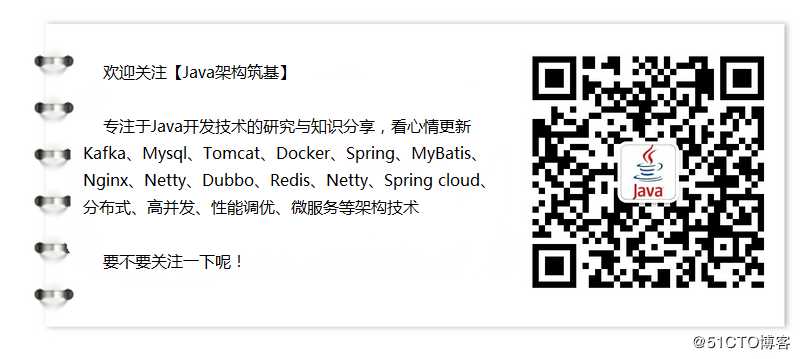标签:而不是 tables 增加 extend 十分钟 完全 linked 红黑树 等于

十分钟就要深入理解HashMap源码,看完你能懂?我觉得得再多看一分钟,才能完全掌握!

终于来到比较复杂的HashMap,由于内部的变量,内部类,方法都比较多,没法像ArrayList那样直接平铺开来说,因此准备从几个具体的角度来切入。
HashMap的每个存储位置,又叫做一个桶,当一个Key&Value进入map的时候,依据它的hash值分配一个桶来存储。
看一下桶的定义:table就是所谓的桶结构,说白了就是一个节点数组。
transient Node<K,V>[] table;
transient int size;HashMap是一个map结构,它不同于Collection结构,不是存储单个对象,而是存储键值对。
因此内部最基本的存储单元是节点:Node。
节点的定义如下:
class Node<K,V> implements Map.Entry<K,V> {
final int hash;
final K key;
V value;
Node<K,V> next;
}可见节点除了存储key,vaue,hash三个值之外,还有一个next指针,这样一样,多个Node可以形成一个单向列表。这是解决hash冲突的一种方式,如果多个节点被分配到同一个桶,可以组成一个链表。
HashMap内部还有另一种节点类型,叫做TreeNode:
class TreeNode<K,V> extends LinkedHashMap.Entry<K,V> {
TreeNode<K,V> parent; // red-black tree links
TreeNode<K,V> left;
TreeNode<K,V> right;
TreeNode<K,V> prev; // needed to unlink next upon deletion
boolean red;
}TreeNode是从Node继承的,它可以组成一棵红黑树。为什么还有这个东东呢?上面说过,如果节点的被哈希到同一个桶,那么可能导致链表特别长,这样一来访问效率就会急剧下降。 此时如果key是可比较的(实现了Comparable接口),HashMap就将这个链表转成一棵平衡二叉树,来挽回一些效率。在实际使用中,我们期望这种现象永远不要发生。
有了这个知识,就可以看看HashMap几个相关常量定义了:
static final int TREEIFY_THRESHOLD = 8;
static final int UNTREEIFY_THRESHOLD = 6;
static final int MIN_TREEIFY_CAPACITY = 64;插入接口:
public V put(K key, V value) {
return putVal(hash(key), key, value, false, true);
}
final int hash(Object key) {
int h;
return (key == null) ? 0 : (h = key.hashCode()) ^ (h >>> 16);
}put方法调用了私有方法putVal,不过值得注意的是,key的hash值不是直接用的hashCode,最终的hash=(hashCode右移16)^ hashCode。
在将hash值映射为桶位置的时候,取的是hash值的低位部分,这样如果有一批key的仅高位部分不一致,就会聚集的同一个桶里面。(如果桶数量比较少,key是Float类型,且是连续的整数,就会出现这种case)。
执行插入的过程:
V putVal(int hash, K key, V value, boolean onlyIfAbsent,
boolean evict) {
Node<K,V>[] tab; Node<K,V> p; int n, i;
if ((tab = table) == null || (n = tab.length) == 0)
n = (tab = resize()).length;
//代码段1
if ((p = tab[i = (n - 1) & hash]) == null)
tab[i] = newNode(hash, key, value, null);
else {
Node<K,V> e; K k;
//代码段2
if (p.hash == hash &&
((k = p.key) == key || (key != null && key.equals(k))))
e = p;
//代码段3
else if (p instanceof TreeNode)
e = ((TreeNode<K,V>)p).putTreeVal(this, tab, hash, key, value);
else {
//代码段4
for (int binCount = 0; ; ++binCount) {
//代码段4.1
if ((e = p.next) == null) {
p.next = newNode(hash, key, value, null);
if (binCount >= TREEIFY_THRESHOLD - 1) // -1 for 1st
treeifyBin(tab, hash);
break;
}
//代码段4.2
if (e.hash == hash &&
((k = e.key) == key || (key != null && key.equals(k))))
break;
p = e;
}
}
//代码段5
if (e != null) { // existing mapping for key
V oldValue = e.value;
if (!onlyIfAbsent || oldValue == null)
e.value = value;
afterNodeAccess(e);
return oldValue;
}
}
//代码段6
++modCount;
if (++size > threshold)
resize();
afterNodeInsertion(evict);
return null;
}了解了put方法,remove方法就容易了,直接讲解私有方法removeNode吧。
public V remove(Object key) {
Node<K,V> e;
return (e = removeNode(hash(key), key, null, false, true)) == null ?
null : e.value;
}
Node<K,V> removeNode(int hash, Object key, Object value,
boolean matchValue, boolean movable) {
Node<K,V>[] tab; Node<K,V> p; int n, index;
//代码段1
if ((tab = table) != null && (n = tab.length) > 0 &&
(p = tab[index = (n - 1) & hash]) != null) {
//代码段2:
Node<K,V> node = null, e; K k; V v;
if (p.hash == hash &&
((k = p.key) == key || (key != null && key.equals(k))))
node = p;
//代码段3:
else if ((e = p.next) != null) {
//代码段3.1:
if (p instanceof TreeNode)
node = ((TreeNode<K,V>)p).getTreeNode(hash, key);
else {
//代码段3.2:
do {
if (e.hash == hash &&
((k = e.key) == key ||
(key != null && key.equals(k)))) {
node = e;
break;
}
p = e;
} while ((e = e.next) != null);
}
}
//代码段4:
if (node != null && (!matchValue || (v = node.value) == value ||
(value != null && value.equals(v)))) {
//代码段4.1:
if (node instanceof TreeNode)
((TreeNode<K,V>)node).removeTreeNode(this, tab, movable);
//代码段4.2:
else if (node == p)
tab[index] = node.next;
//代码段4.3:
else
p.next = node.next;
++modCount;
--size;
afterNodeRemoval(node);
return node;
}
}
return null;
}rehash就是重新分配桶,并将原有的节点重新hash到新的桶位置。
先看两个和桶的数量相关的成员变量
final float loadFactor;
int threshold;桶的扩展策略,见下面的函数,如果需要的容量是cap,真实扩展的容量是大于cap的一个2的冥次。
这样依赖,每次扩展,增加的容量都是2的倍数。
static final int tableSizeFor(int cap) {
int n = cap - 1;
n |= n >>> 1;
n |= n >>> 2;
n |= n >>> 4;
n |= n >>> 8;
n |= n >>> 16;
return (n < 0) ? 1 : (n >= MAXIMUM_CAPACITY) ? MAXIMUM_CAPACITY : n + 1;
}这是具体的扩展逻辑
Node<K,V>[] resize() {
//此处省略了计算newCap的逻辑
Node<K,V>[] newTab = (Node<K,V>[])new Node[newCap];
table = newTab;
if (oldTab != null) {
for (int j = 0; j < oldCap; ++j) {
Node<K,V> e;
if ((e = oldTab[j]) != null) {
oldTab[j] = null;
//分支1
if (e.next == null)
newTab[e.hash & (newCap - 1)] = e;
//分支2
else if (e instanceof TreeNode)
((TreeNode<K,V>)e).split(this, newTab, j, oldCap);
//分支3
else { // preserve order
//此处省略了链表拆分逻辑
}
}
}
return newTab;
}由于新桶的数量是旧桶的2的倍数,所以每个旧桶都能对应2个或更多的新桶,互不干扰。 所以上面的迁移逻辑,并不需要检查新桶里面是否有节点。
可见,rehash的代价是很大的,最好在初始化的时候,能够设定一个合适的容量,避免rehash。
最后,虽然上面的代码没有体现,在HashMap的生命周期内,桶的数量只会增加,不会减少。
所有迭代器的核心就是这个HashIterator
abstract class HashIterator {
Node<K,V> next; // next entry to return
Node<K,V> current; // current entry
int expectedModCount; // for fast-fail
int index; // current slot
final Node<K,V> nextNode() {
Node<K,V>[] t;
Node<K,V> e = next;
if (modCount != expectedModCount)
throw new ConcurrentModificationException();
if (e == null)
throw new NoSuchElementException();
if ((next = (current = e).next) == null && (t = table) != null) {
do {} while (index < t.length && (next = t[index++]) == null);
}
return e;
}
}简单起见,只保留了next部分的代码。原理很简单,next指向下一个节点,肯定处在某个桶当中(桶的位置是index)。那么如果同一个桶还有其他节点,那么一定可以顺着next.next来找到,无论这是一个链表还是一棵树。否则扫描下一个桶。
有了上面的节点迭代器,其他用户可见的迭代器都是通过它来实现的。
final class KeyIterator extends HashIterator
implements Iterator<K> {
public final K next() { return nextNode().key; }
}
final class ValueIterator extends HashIterator
implements Iterator<V> {
public final V next() { return nextNode().value; }
}
final class EntryIterator extends HashIterator
implements Iterator<Map.Entry<K,V>> {
public final Map.Entry<K,V> next() { return nextNode(); }
}KeySet的部分代码:这并不是一个独立的Set,而是一个视图,它的接口内部访问的都是HashMap的数据。
final class KeySet extends AbstractSet<K> {
public final int size() { return size; }
public final void clear() { HashMap.this.clear(); }
public final Iterator<K> iterator() { return new KeyIterator(); }
public final boolean contains(Object o) { return containsKey(o); }
public final boolean remove(Object key) {
return removeNode(hash(key), key, null, false, true) != null;
}
}EntrySet、Values和KeySet也是类似的,不再赘述。
1、key&value存储在节点中;
2、节点有可能是链表节点,也有可能是树节点;
3、依据key哈希值给节点分配桶;
4、如果桶里面有多个节点,那么要么形成一个链表,要么形成一颗树;
5、装载因子限制的了节点和桶的数量比例,必要时会扩展桶的数量;
6、桶数量必然是2的冥次,重新分配桶的过程叫做rehash,这是很昂贵的操作;

标签:而不是 tables 增加 extend 十分钟 完全 linked 红黑树 等于
原文地址:https://blog.51cto.com/14409778/2419149